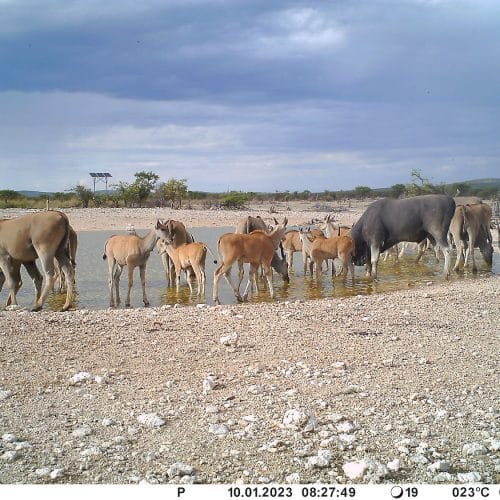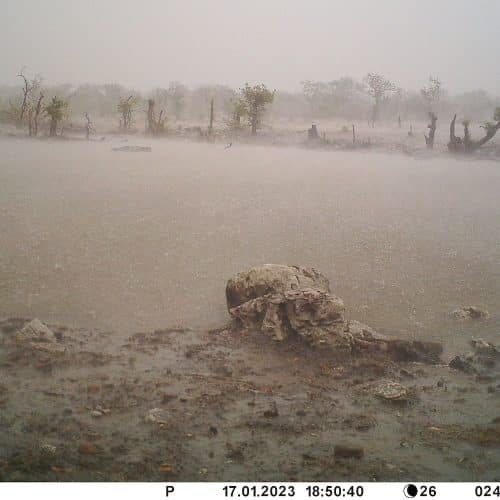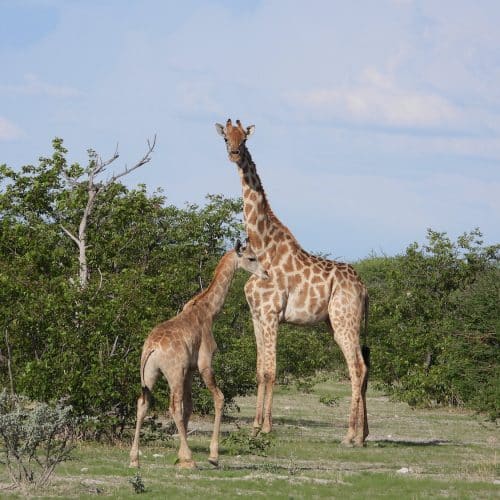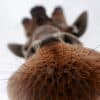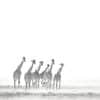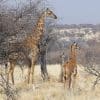There is no such thing as a slow start to a year for our GCF team. When our conservation team came together in Namibia in January for a joint planning session, we were reminded of the value of in-person meetings! It was such a pleasure to spend time together in the same room rather than meet on a computer screen only. Personal connections are important and invaluable for a team! Together we explored the Etosha Heights Private Reserve, the home of our Savannah Landscape Ecology & Education Centre (SLEEC) and spent hours on a game viewer doing what we all love most – being out in nature and watching wildlife. We were also joined by two GCF-USA Board members, who used this opportunity to meet the team and learn more about our work first hand.
What a great start to the year and we are excited for what is to come in 2023. We hope you are too!
What is new?
Conservation Planning & the GCF Team
Determined to hit the ground running and make 2023 the greatest year yet for giraffe conservation, our GCF conservation team came together at the GCF office in Windhoek, Namibia to set the scene for the year ahead. From surveys and translocations to capacity building and new partnerships to considering potential future impacts of climate change on giraffe, we discussed how to best implement our giraffe conservation actions throughout Africa.

Partnerships are at the core of our conservation approach and we have worked with some of our partners for many years already. During a trip to the Luangwa Valley in Zambia almost 14 years ago, we first met the team of the Zambia Carnivore Program (ZCP).
Our initial discussions inspired the ZCP team to start collecting photos of giraffe while in the field, effectively starting a long-term photo study of the isolated giraffe population in the Luangwa Valley. We have now strengthened this collaboration by jointly supporting a dedicated Luangwa Giraffe Project Coordinator to help better understand population numbers, density, and distribution. Frederike works collaboratively with partners throughout the landscape to collate giraffe data and implement a conservation research and monitoring programme of Luangwa giraffe.
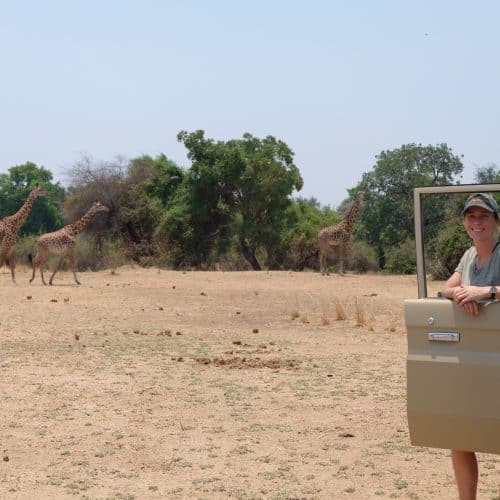
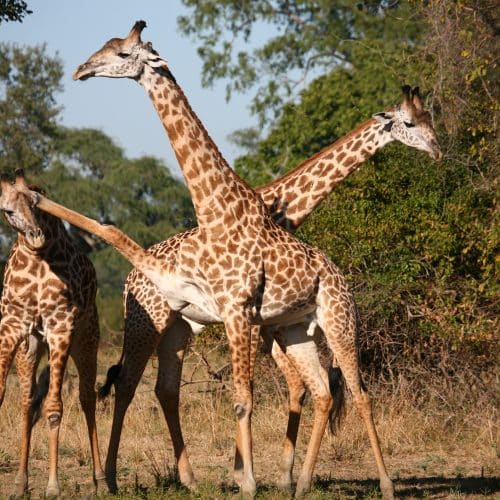
Meanwhile in Namibia we would like to use this opportunity to congratulate Audi on his recent move from the KEEP team to leading our long-term conservation monitoring programme of Angolan giraffe in northwest Namibia. Exciting times for Audi and we look forward to sharing his updates from the field with you.
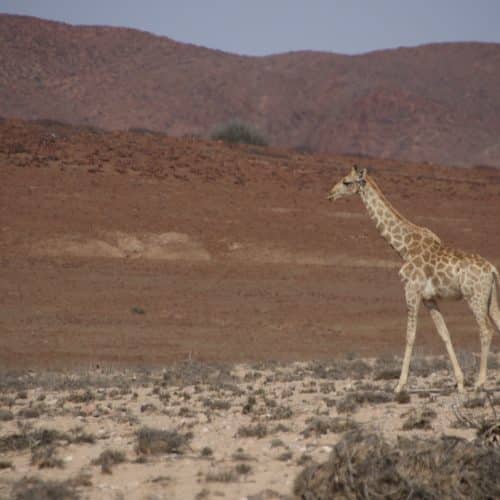

It’s reporting time
We have long asked ourselves whether traditional reports are the best way of sharing information when we are all used to scanning news headlines and scrolling through social media posts.
We are constantly looking for better ways of sharing our impact on giraffe conservation in Africa with a wider audience. We realise that not everyone is a giraffe expert and interested in too much detail, but at the same time, we need to make sure we can show our impact and prove that we are effective in our approach.
Instead of long narratives, we will try to produce short impact-focused reports for most of our programmes that are easy to digest and give you a quick overview of what is going on.
Have a look at the State of Giraffe 2022 – Zimbabwe report below: two pages packed with information.
Let us know what you think!
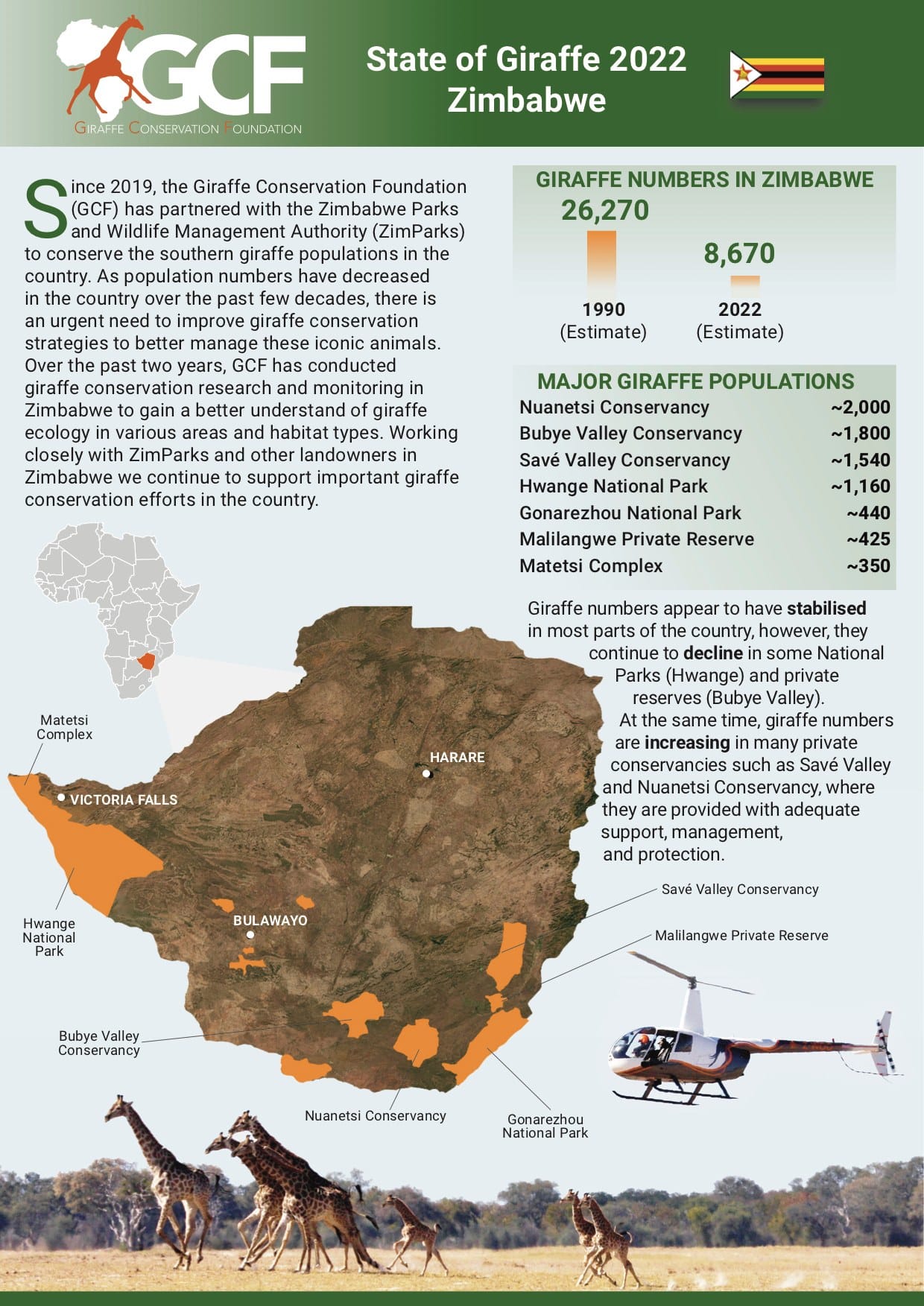
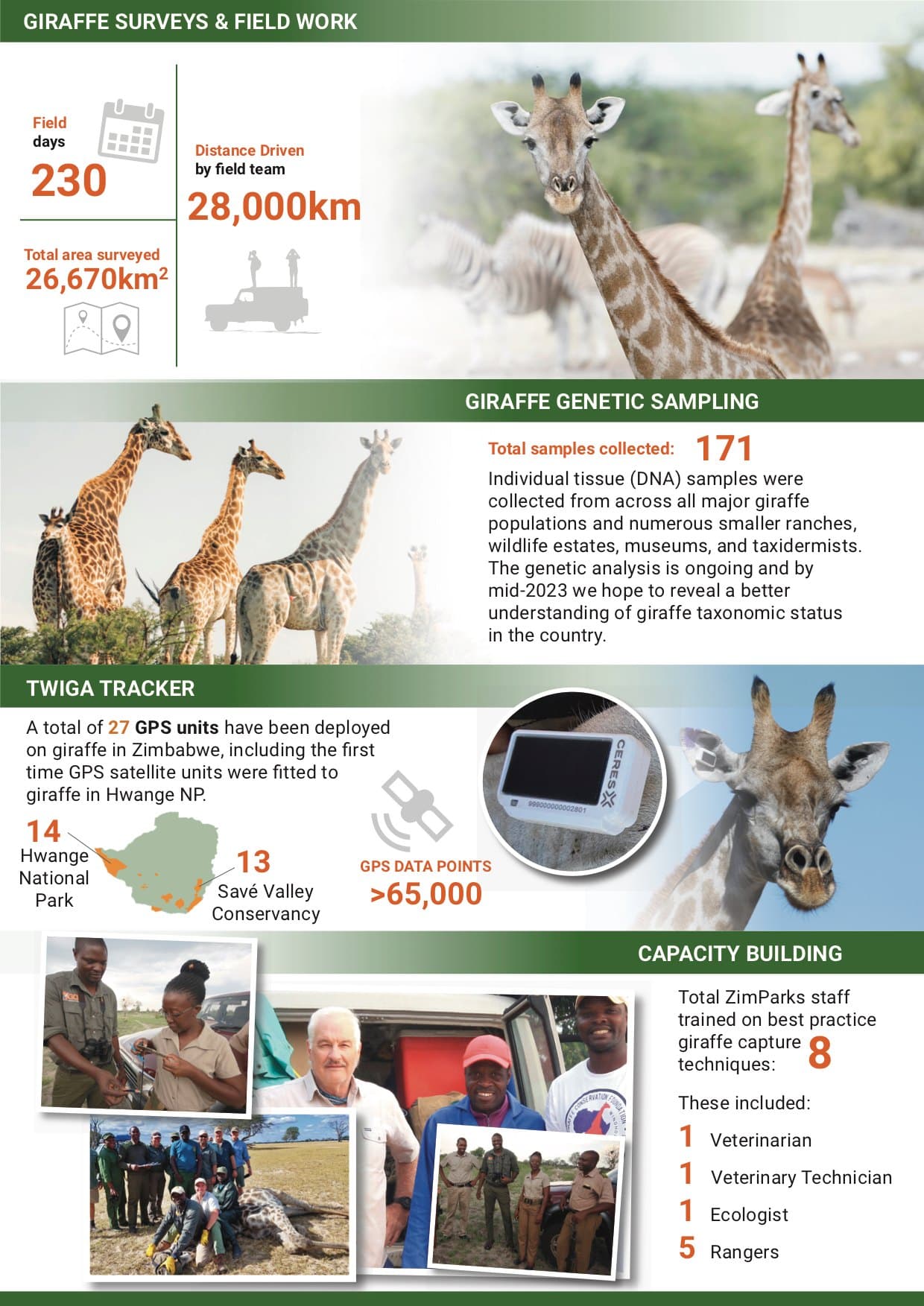
And just incase you missed it, be sure to check out our Annual Report online to find out how we continue to stand tall for giraffe.
Understanding how giraffe use their habitat
Habitat loss and fragmentation are two of the biggest threats to giraffe and other wildlife species. Through our Twiga Tracker Initiative we learn more about how giraffe move and utilise the landscapes they call home in different parts of Africa.
In the Athi Kapiti conservation area just a few kilometres from Kenya’s capital Nairobi, giraffe live in close proximity with people and have to navigate in between houses, businesses, fences, roads and railway lines. To find out how exactly they master these challenges, we recently deployed 10 GPS satellite tags in collaboration with the Kenya Wildlife Services. We are already observing some interesting movements of these endangered Masai giraffe and we’ll be able to pinpoint threat hotspots. Stay tuned for more updates soon.
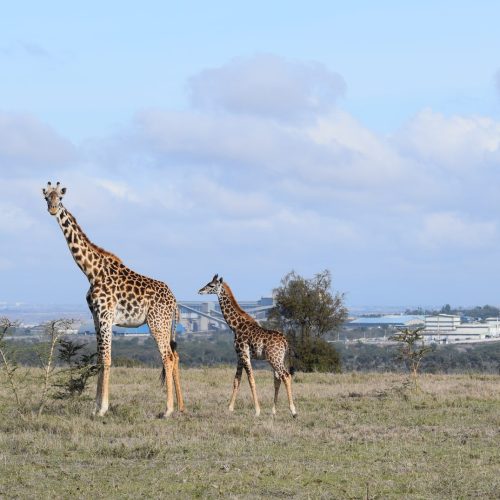

Namibia turns green
A brief update from the Savannah Landscape Ecology & Education Centre (SLEEC) on the Etosha Heights Private Reserve in central Namibia: After a hot, dry and dusty December which saw the waterholes busy with thirsty wildlife, we finally received rain. Almost over night, the reserve transformed into a lush and green paradise with plenty of water everywhere. These are exciting times to be in the bush and experience new life all around.
